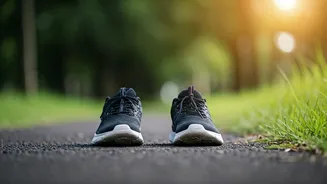The Ideal Timing
Walking after meals is a simple yet impactful habit for improving your health. But when is the best time to start? According to Dr. Sudhir Kumar, wait
about 10–15 minutes after eating before beginning your walk. This waiting period aligns with the rise of blood glucose levels as the meal digests and glucose enters the bloodstream. Dr. Kumar suggests light to moderate walking (3–4 km/hour pace) for 10–20 minutes. A longer walk of 30 minutes can provide additional benefits, particularly after meals rich in carbohydrates. This practice is especially beneficial for those managing diabetes or prediabetes, potentially reducing post-meal glucose spikes and improving HbA1c levels over time. Walking immediately after eating might lead to discomfort for some people, especially after heavier meals, so it's best to wait.
Avoid Common Pitfalls
Many individuals unknowingly diminish the effectiveness of their walks. One common mistake is walking too slowly or without a clear purpose, which fails to elevate your heart rate enough to burn calories and enhance fitness. To correct this, consider increasing your pace or incorporating arm movements. Another issue is poor posture. Slouching can strain the neck, back, and shoulders. Maintain an upright posture, engage your core, and swing your arms naturally. Skipping consistency is another mistake; regular walks, even for 15 minutes a day, are crucial. Choosing the wrong footwear, which lacks proper support, can lead to pain and injuries, undermining your motivation. Varying your routes is also important, as sticking to the same path can lead to boredom. Mix up your walks with different paths or slight inclines to challenge your body. Finally, not staying hydrated or ignoring your body's signals, particularly in hot weather, can make walking uncomfortable or even unsafe.













